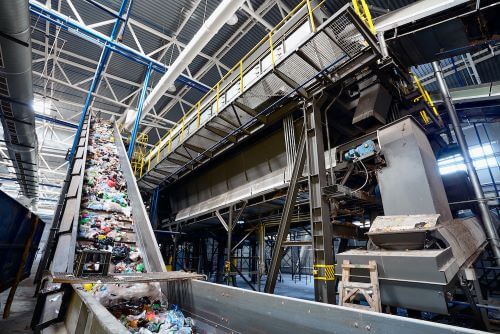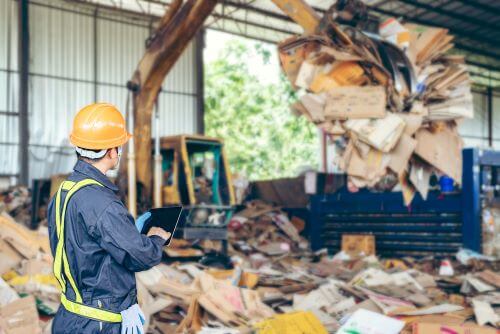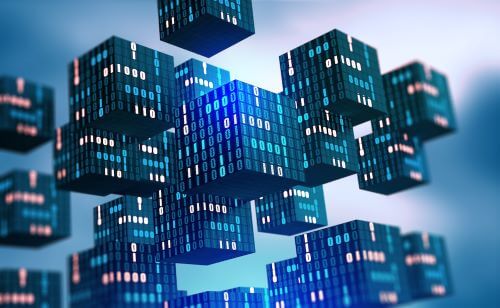
The recycling industry is one that has seen a lot of change in recent years, thanks in part to various advancements in technology. Technology has allowed recycling companies to become more efficient and productive, and it has also helped them to reduce their environmental impact. In this blog post, we will discuss some of the ways that technology is used in the recycling industry, as well as what could be in store for the future.
For years, the recycling industry has been doing its part to help the environment by collecting and processing materials that would otherwise end up in landfills. However, the recycling industry is now starting to use technology to take things one step further. Here’s a look at how technology is being used in the recycling industry to increase efficiency, reduce waste, and save money.
Technology in Material Recovery Facilities
 Material recovery facilities (MRFs) are facilities where recyclable materials are sorted and processed for sale to end-users. Traditionally, MRFs have relied heavily on manual labour to get the job done. However, new technologies are starting to play a role in MRFs.
Material recovery facilities (MRFs) are facilities where recyclable materials are sorted and processed for sale to end-users. Traditionally, MRFs have relied heavily on manual labour to get the job done. However, new technologies are starting to play a role in MRFs.
With the ever growing focus on sustainability and reducing our reliance on single-use products, recycling has become more important than ever. And while most people are aware of the basics of recycling (sorting paper from plastic, for instance) fewer are familiar with the role that Material Recovery Facilities play in the process.
At these facilities, recyclable materials are sorted and processed for sale to end users. And while the machines and processes used have remained largely unchanged for many years, new technologies are beginning to play a role in making the sorting and processing of recyclables more efficient. Here’s how some of the new technologies are being used and how they’re making an impact.
Optical sorting technology
Optical sorting technology is one of the most popular methods of sorting recyclable materials. This technology uses sensors to identify different materials by their optical properties. Once the different materials have been identified, they are then sorted into separate streams using air jets or conveyor belts. Optical sorting is quick, efficient and can achieve high levels of sorted material purity.
X-ray separation
Another popular sorting technology is X-ray separation. This technology uses X-rays to identify different materials by their densities. This information is then used to sort the materials into different streams using conveyor belts or other similar methods. X-ray separation is also quick and efficient, and can also achieve high levels of sorted material purity.
Magnetic separation
Magnetic separation is another common sorting method, which uses magnets to separate ferrous metals from non-ferrous metals. This separation is achieved by passing the mixed stream of recyclable materials over powerful magnets, which attract and remove the ferrous metals from the rest of the stream. Magnetic separation is simple, cost-effective and can be used to achieve high levels of sorted material purity too.
Infrared technology
Another new technology that’s being used is infrared technology. This can be used to identify different types of plastics so that they can be sorted accordingly. Additionally, infrared scanners can be used to detect contaminants like food waste or hazardous materials so that they can be removed from the recycling stream.
These are just a few of the many sorting technologies that are being used in recycling plants around the world today. By using these technologies, we can sort recyclable materials more effectively and efficiently than ever before, helping to reduce waste, conserve resources and protect our environment for future generations.
Robotics
Robots are also beginning to play a role in processing in recycling facilities. While they’re not yet advanced enough to replace human workers entirely, they can be used for tasks like moving heavy loads and cleaning up debris. This not only makes the work easier for employees, but also helps to improve safety conditions at the facility.
RFID Tags
RFID tags are another type of technology that is being used in the recycling industry. These tags are attached to materials so that they can be tracked as they move through the recycling process. This helps to improve efficiency and prevents materials from being lost or misplaced. RFID tags also make it easier to keep track of recyclable materials so that they can be properly accounted for.
These are just a few examples of the new technologies being used in MRFs to improve efficiency and effectiveness. As recycling becomes more commonplace, it’s likely that we’ll see even more innovative solutions being implemented in MRFs around the world.
Predictive Analytics
Predictive analytics is a type of artificial intelligence that is being used by some recycling companies to forecast future trends in the market for recyclable materials. This information can then be used by recycling companies to make better decisions about what materials to collect and process. Additionally, predictive analytics can also be used to identify operational issues at recycling facilities before they cause disruptions or downtime.
As a result, predictive analytics technology is a game changer for the recycling industry. By analysing data such as material type, weight, and destination, predictive analytics can help recycling companies identify inefficiencies and optimise their operations. For example, a recycling company might use predictive analytics to determine that certain materials are more likely to be contaminated and should therefore be sorted separately. Or, a company might use predictive analytics to route its trucks more efficiently, reducing wear and tear on the vehicles and saving on fuel costs.
Not only does predictive analytics technology help recycling companies operate more efficiently, but it also helps them sell their recycled materials more easily. That’s because buyers are increasingly interested in purchasing materials that have been sorted correctly and are free of contaminants. As a result, recycling companies that are using predictive analytics technology to sort their materials more accurately are able to resell these materials more easily and get them back into circulation.
Predictive analytics technology is quickly becoming essential for the recycling industry. By helping companies optimise their operations and sell their recycled materials for a higher price, predictive analytics is playing a vital role in transforming the recycling industry for the better.
The Future of Technology in Recycling
Blockchain in the Recycling Industry
 Recently, there has been a lot of talk about blockchain and how this technology can be used to help different industries. So, what is blockchain? In short, blockchain is a type of distributed ledger technology that can be used to track material flows throughout the recycling supply chain. By tracking these flows, it will be possible to identify potential issues and inefficiencies.
Recently, there has been a lot of talk about blockchain and how this technology can be used to help different industries. So, what is blockchain? In short, blockchain is a type of distributed ledger technology that can be used to track material flows throughout the recycling supply chain. By tracking these flows, it will be possible to identify potential issues and inefficiencies.
In addition, blockchain can be used to create digital tokens that represent recyclable materials. These tokens can then be traded on a blockchain-based marketplace. This would allow recyclers to sell their materials directly to manufacturers who are looking for sustainable sourcing options.
There are many potential benefits of using blockchain in the recycling industry. First and foremost, it would make the recycling process more transparent. By tracking the flow of materials throughout the supply chain, it would be possible to see where materials are being wasted or lost. This information could then be used to make changes to the recycling process itself.
In addition, blockchain could help to create a secondary market for recyclable materials. As mentioned above, recyclers could create digital tokens that represent their materials. These tokens could then be traded on a blockchain-based marketplace. This would allow recyclers to sell their materials directly to manufacturers who are looking for sustainable sourcing options.
Furthermore, blockchain-based smart contracts could be used to automatically pay recyclers when their materials are received by manufacturers. This would help to streamline the recycling process and make it more efficient.
Last but not least, blockchain could help to combat fraud in the recycling industry. By tracking material flows throughout the supply chain, it would be possible to identify any potential instances of fraud or waste.
Internet of Things
Over the past few years, there has been a growing demand for increased sustainability and ethical practices from businesses. In response to this, some recycling companies are beginning to implement new technologies such as the Internet of Things (IoT).
The IoT refers to the growing network of physical devices (including for example recycling bins) that can be connected to the internet and equipped with sensors that collect data about their surroundings (e.g. temperature or humidity). This data can then be used by recycling companies to optimise operations and reduce waste.
The first benefit of the IoT is that it will enable recycling companies to track data in real time. This is useful for predicting patterns and trends so that companies can adjust their operations accordingly. For example, if a particular type of waste is being disposed of more frequently than others, recycling companies could increase capacity in that area to avoid issues such as overflowing bins.
The real time data provided by IoT devices also allows for more effective marketing campaigns as companies can target specific demographics with ads related to their interests.
Another benefit of the IoT is that it has the potential to make recycling bin pickups more efficient. Instead of having to go through bins manually to determine how much waste needs to be picked up, with IoT-enabled devices recycling companies could remotely monitor fullness levels and only dispatch trucks when bins are close to being full. This would not only save time but also reduce emissions from vehicles as they wouldn’t be making unnecessary journeys.
Finally, the use of IoT devices in recycling can help to create a more circular economy. By collecting data on what types of waste are being disposed of and where, businesses can make changes to their practices so that less waste is sent to landfill sites and more is recycled or reused. For instance, if a company produces a lot of plastic packaging, they could use the data collected from IoT devices to find ways to reduce this amount or recycle it internally.
These are just a few examples of how technology is currently being used in the recycling industry to increase efficiency and reduce wastefulness as well as what is in the pipeline for the future. As these technologies become more widespread, it’s likely that we’ll see even more innovation in this field. And that’s good news for everyone who cares about protecting our planet.
